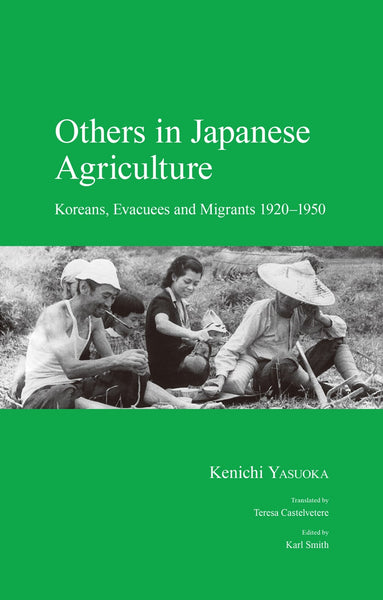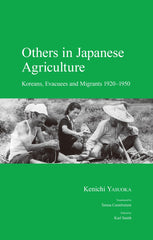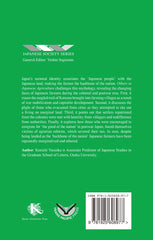Others in Japanese Agriculture
Many In Stock
Japan's national identity associates the 'Japanese people' with the Japanese land, making the farmer the backbone of the nation. Others in Japanese Agriculture challenges this mythology, revealing the changing faces of Japanese farmers during the colonial and post-war eras. First, it traces the tangled trail of Koreans brought into farming villages as a result of war mobilization and capitalist development. Second, it discusses the plight of those who evacuated from cities as they attempted to eke out a living on marginal land. Third, it points out that settlers repatriated from the colonies were met with hostility from villagers and indifference from authorities. Finally, it explores how those who were encouraged to emigrate for 'the good of the nation' in post-war Japan, found themselves victims of agrarian reforms, which severed their ties. In sum, despite being lauded as the 'backbone of the nation' Japanese farmers have been repeatedly marginalized and othered.
Awards
Japan Society for Village Studies Research Award 2015 Japan Agricultural History Award 2015
About Editors and Authors
YASUOKA Kenichi is Associate Professor in the Graduate School of Letters at Osaka University. He specializes in modern Japanese history, especially focusing on peasant movements, immigration and settlement. He was born in Kobe, and after receiving his PhD in Agriculture from Kyoto University in 2011, he joined the Japanese Studies Laboratory, Graduate School of Letters, Osaka University as Special Lecturer in 2015, before being appointed to his current position.
Table of contents
Figures
Tables
Photos
List of Contributors
Introduction
Noriko Sudo
1 Film Control in the Japan Film Law (Eiga-ho)
Atsuko KATO
Show More >
Figures
Tables
Photos
List of Contributors
Introduction
Noriko Sudo
1 Film Control in the Japan Film Law (Eiga-ho)
Atsuko KATO
2 “Me-istic Nationalism” in Films Promoted by the Japan Self-Defense Forces: Focus on Midnight Eagle as an Example
Noriko SUDO
3 Collaboration between U.S. Film Industry and U.S. Government for Film Distribution in the Republic of China
Takeshi TANIKAWA
4 WWII Film Production in Chongqing: The Japanese Spy
Yanli HAN
5 Factors in the Establishment of the Animation Industry in Postwar Japan
Tomoya KIMURA
6 Virtuous and Depraved: Portrayals of Women in North Korean Cinema
Benjamin JOINAU
7 Dual Language, Dubbed Cinema: An Enlightened Colonial Subject in Homeless Angels
Youngjae YI
8 Double-edged National Imagery: From The Daughter of the Samurai to My Japan
Takeshi TANIKAWA
9 The Mysterious Popularity of Japanese Films in Taiwan in the 1950s and ’60s
Mamie MISAWA
Index


